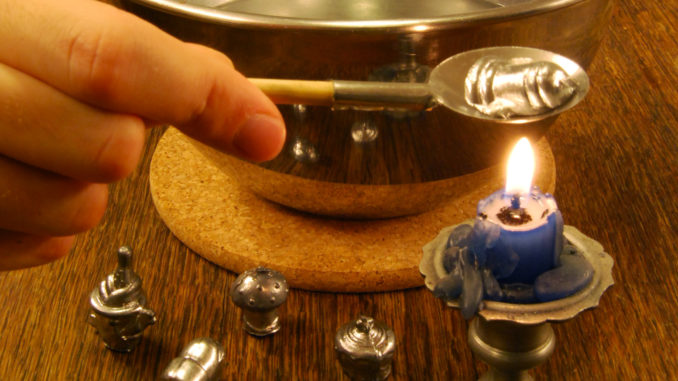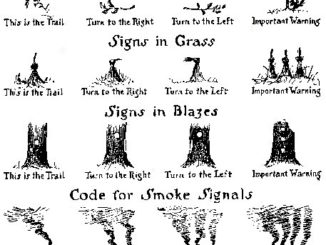
The history of Molybdomancy can be traced back to Roman times, and it was widely used in the British Isles in the Caroline era, but it is not a common method of divination today. It is a popular form of New Year’s entertainment in Scandinavia.
A cheap metal with low melting point is used, usually lead or tin, now-a-days an amalgam of both, but as lead is poisonous and can damage the nervous system and cause blood disorders, you have to be careful, avoid the fumes and smoke and not do this often nor for a long time. Also, you have to be careful when disposing the rests. Lead is a heavy metal and should be disposed as environmental hazard, together with batteries.
You can scry from the shiny surface of a pool of molten metal, but it is easier to drop the melted tin into a bowl of cold water, and let the metal harden. It will form odd shapes as it hardens. The resulting lump of metal will then be studied and the future told by interpreting the different forms and shapes of the piece.
One can also rotate the piece in candlelight and interpret the shapes of the shadows cast on the wall by the metal piece.
You can use any list of tea leaf reading symbols and meanings as a guide for interpreting the metal lumps. There are plenty of these lists found on-line.
Some traditional omens:
- If you see a ship, train or plane in your piece, you can see forward a journey.
- If you see a key, you will be promoted.
- A woman means problems with neighbors.
- Small bubbles, like coins, mean money.
- If you can’t pick up a piece of tin from the water bowl, but the tin has shattered into small shards, you are heading towards a bad year.
This can also be done with molten wax, but then it’s called Ceroscopy.
Be careful when handling the hot metal. The melting point of tin might be low for a metal, but it is still 230°C (450°F) and can cause bad burns.
Proudly WWW.PONIREVO.COM



